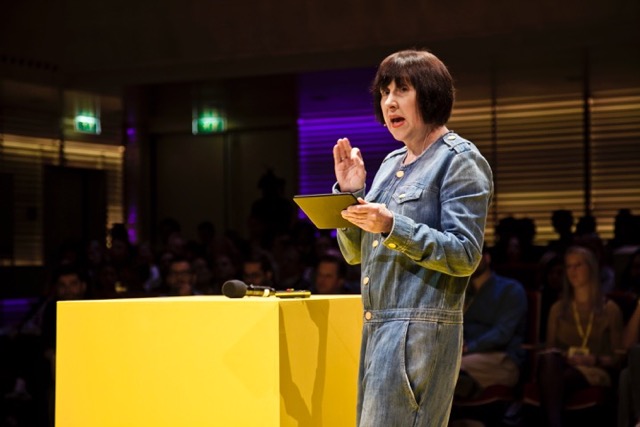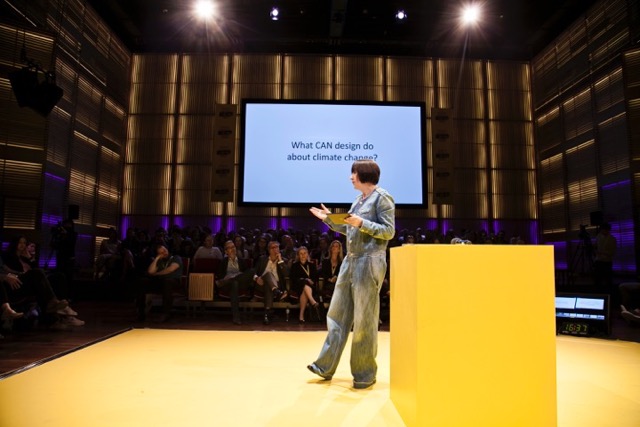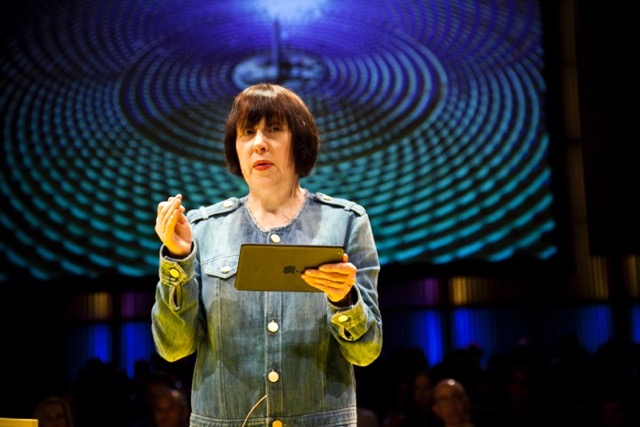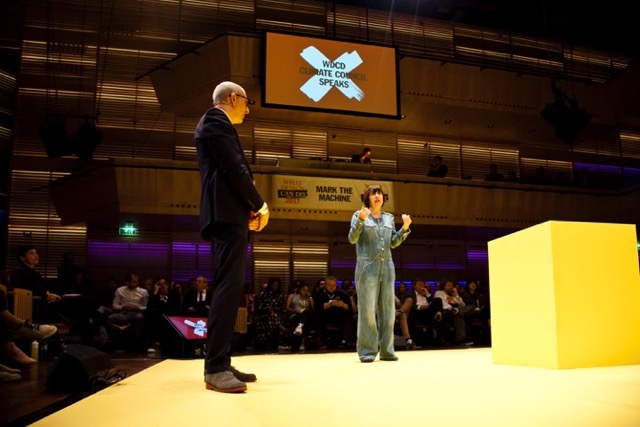By Gabrielle Kennedy
This year’s What Design Can Do conference tackled the issue of climate change. During design critic Alice Rawsthorn’s opening address she decried the lack of any universal political consensus on the subject, but expressed hope based on the seemingly broad concerns shared by mainstream society.
“But we are entering a fragile and worrying era,” she said, “and the chief culprit is this guy.”
Up flashed yet another image of a buffoonesque-looking Donald Trump.
“I am not a big believer in man-made global warming,” the 45th president of the United States of America said last year referring to protestors as “global warming hoaxters”.
“Without the commitment, enthusiasm and passion of Obama, political efforts to address climate change will be weakened,” said Rawsthorn. “The battle will be dependent on the corporate sector, individuals, and NGOs. They will need powerful tools and those tools include design.”
The problem is that too many people do not think that design is equipped to deal with climate change. “It is often seen as just a strong marketing tool enticing us to buy things we don’t need which are later discarded in landfills,” said Rawsthorn.
Of course some design projects are guilty-as-charged. Dodgy design practices and bogus sustainability claims are unruly obstacles to progress. ‘They don’t tell the truth,” Rawsthorn said, using the new London Bus trumpeted as a marvel by Boris Johnson as a good example. “And like Boris himself, the bus is a disaster,” she said. “I quite like the look of it. Thomas Heatherwick reinvented it in an engaging way, but the quality of the engineering is appalling.”
The tangible gap in design’s story, namely, about how the discipline has leapt out of its traditional stereotype to fulfill much more productive and social roles needs to be closed. Fast.
“Design’s ability to tackle important challenges will be determined by whether society thinks it is equipped to do so,” said Rawsthorn.
Which brings us back to the increasingly complex question of what is design and how can its more mainstream reputation be improved?
“Design is a complex and elusive phenomenon that changes,” said Rawsthorn. “But it has one elemental role as an agent of change. It should help us make sense of what is happening and turn it to our advantage … because every design sets out to change something whether it be small or large.”
And design, at its best, can play a role in tackling humanity’s biggest issues: it can influence lifestyles and objects, but also economics, politics, and communication. Design can help us to reinterpret the past, visualize the future and create a more equitable world. Just last week during Design Academy Eindhoven’s end-of-year exams we saw projects dealing with refugees, politics, terrorism and climate change.
“Design is not a panacea, but it is a powerful tool to address a lot,” said Rawsthorn. “But for design to be allowed into these areas it needs to stop being trivialized and seen only as a styling tool. If businesses, banks, NGOs and governments persistently see it as expensive chairs, then it is doomed to being restricted to those roles, rather than as a discipline able to create solutions to major problems.”



